Potrebujeme váš súhlas na využitie jednotlivých dát, aby sa vám okrem iného mohli ukazovať informácie týkajúce sa vašich záujmov. Súhlas udelíte kliknutím na tlačidlo „OK“.
ASTM E1676-12
Standard Guide for Conducting Laboratory Soil Toxicity or Bioaccumulation Tests with the Lumbricid Earthworm Eisenia Fetida and the Enchytraeid Potworm Enchytraeus albidus
Automaticky preložený názov:
Štandardné príručka pre Vedenie laboratória zemín Toxicity alebo biologická testy s Lumbricid Earthworm Eisenia fetida a Enchytraeid roupic Enchytraeus albidus
NORMA vydaná dňa 1.11.2012
Informácie o norme:
Označenie normy: ASTM E1676-12
Poznámka: NEPLATNÁ
Dátum vydania normy: 1.11.2012
Kód tovaru: NS-42603
Počet strán: 27
Približná hmotnosť: 81 g (0.18 libier)
Krajina: Americká technická norma
Kategória: Technické normy ASTM
Kategórie - podobné normy:
Znečišťování, kontrola znečišťování a konzervace
Biologické vlastnosti půd
Anotácia textu normy ASTM E1676-12 :
Keywords:
bioaccumulation tests, earthworm, potworms, soil toxicity, ICS Number Code 13.020.40 (Pollution, pollution control and conservation),13.080.30 (Biological properties of soil)
Doplňujúce informácie
| Significance and Use | |||||||||||||||||||||||||||||||||||||||||||||||||||||||||||||||||||||||||||
|
5.1 Soil toxicity tests provide information concerning the toxicity and bioavailability of chemicals associated with soils to terrestrial organisms. As important members of the soil fauna, lumbricid earthworms and enchytraeid potworms have a number of characteristics that make them appropriate organisms for use in the assessment of potentially hazardous soils. Earthworms may ingest large quantities of soil, have a close relationship with other soil biomasses (for example, invertebrates, roots, humus, litter, and microorganisms), constitute up to 92 % of the invertebrate biomass of soil, and are important in recycling nutrients (1, 2).4 Enchytraeids contribute up to 5.2 % of soil respiration, constitute the second-highest biomass in many soils (the highest in acid soils in which earthworms are lacking) and effect considerably nutrient cycling and community metabolism (3-5). Earthworms and potworms accumulate and are affected by a variety of organic and inorganic compounds 5.2 A number of species of lumbricids and enchytraeid worms have been used in field and laboratory investigations in the United States and Europe. Although the sensitivity of various lumbricid species to specific chemicals may vary, from their study of four species of earthworms (including 5.2.1 E. fetida is a species whose natural habitats are those of very high organic matter such as composts and manure piles. It was selected as the test species because it (1) is bred in the laboratory easily; ( 2) is the earthworm species used most commonly in laboratory experiments (17); (3) has been studied extensively, producing a data pool on the toxicity and bioaccumulation of a variety of compounds (2, 7, 8, 18-23); (4) has been approved for use in toxicity testing by the European Union (EU) and the Organization for Economic Cooperation and Development (OECD); and (5.2.2 The recommended enchytraeid test species is Enchytraeus albidus Henle 1837 (white potworm). E. albidus is one of the biggest (up to 15 mm) species of the oligochaete family Enchytraeidae and it is distributed world-wide (25, 26). E. albidus is found in marine, limnic, and terrestrial habitats, mainly in decaying organic matter (seaweed, compost) and rarely in meadows 5.3 Results from soil toxicity tests might be an important consideration when assessing the hazards of materials to terrestrial organisms. 5.4 Information might also be obtained on the bioaccumulation of chemicals associated with soil by analysis of animal tissues for the chemicals being monitored. These results are useful for studying the biological availability of chemicals. 5.5 The soil toxicity test might be used to determine the temporal or spatial distribution of soil toxicity. Test methods can be used to detect horizontal and vertical gradients in toxicity. 5.6 Results of soil toxicity tests could be used to compare the sensitivities of different species. 5.7 An understanding of the effect of these parameters on toxicity and bioaccumulation may be gained by varying soil characteristics such as pH, clay content, and organic material. 5.8 Results of soil toxicity tests may be useful in helping to predict the effects likely to occur with terrestrial organisms in field situations. 5.8.1 Field surveys can be designed to provide either a qualitative or quantitative evaluation of biological effects within a site or among sites. 5.8.2 Soil surveys evaluating biological effects are usually part of more comprehensive analyses of biological, chemical, geological, and hydrographic conditions. Statistical correlation can be improved and costs reduced if subsamples of soil for laboratory toxicity tests, geochemical analyses, and community structure are taken simultaneously from the same grab of the same site. 5.9 Soil toxicity and bioaccumulation tests can be an important tool for making decisions regarding the extent of remedial action necessary for contaminated terrestrial sites. |
|||||||||||||||||||||||||||||||||||||||||||||||||||||||||||||||||||||||||||
| 1. Scope | |||||||||||||||||||||||||||||||||||||||||||||||||||||||||||||||||||||||||||
|
1.1 This guide covers procedures for obtaining laboratory data to evaluate the adverse effects of contaminants (for example, chemicals or biomolecules) associated with soil to earthworms (Family Lumbricidae) and potworms (Family Enchytraeidae) from soil toxicity or bioaccumulation tests. The methods are designed to assess lethal or sublethal toxic effects on earthworms or bioaccumulation of contaminants in short-term tests (7 to 28 days) or on potworms in short to long-term tests (14 to 42 days) in terrestrial systems. Soils to be tested may be 1.2 Modification of these procedures might be justified by special needs. The results of tests conducted using atypical procedures may not be comparable to results using this guide. Comparison of results obtained using modified and unmodified versions of these procedures might provide useful information concerning new concepts and procedures for conducting soil toxicity and bioaccumulation tests with terrestrial worms. 1.3 The results from field-collected
soils used in toxicity tests to determine a spatial or temporal
distribution of soil toxicity may be reported in terms of the
biological effects on survival or sublethal endpoints (see Section
1.4 The results of toxicity tests
with 1.5 This guide is arranged as
follows:
1.6 The values stated in SI units are to be regarded as the standard. 1.7 This standard does not
purport to address all of the safety concerns, if any, associated
with its use. It is the responsibility of the user of this standard
to establish appropriate safety and health practices and determine
the applicability of regulatory limitations prior to use.
Standard Practice for Use of the
Internation System of Units (SI) (the Modernized Metric System)
(Withdrawn 1997) Standard Guide for Assessing the Hazard
of a Material to Aquatic Organisms and Their Uses Standard Guide for Disposal of Laboratory
Chemicals and Samples Standard Guide for Determination of the
Bioaccumulation of Sediment-Associated Contaminants by Benthic
Invertebrates Guide for Conducting Sediment Toxicity
Tests with Freshwater Invertebrates (Withdrawn 1995) Standard Terminology Relating to Soil,
Rock, and Contained Fluids Standard Terminology Relating to
Biological Effects and Environmental Fate Standard Test Method for Measuring the
Toxicity of Sediment-Associated Contaminants with Freshwater
Invertebrates | |||||||||||||||||||||||||||||||||||||||||||||||||||||||||||||||||||||||||||
Podobné normy:
Historická
1.11.2010
Historická
15.5.2011
Historická
1.12.2012
Historická
1.4.2013
Historická
15.9.2008
Historická
1.1.2012
Odporúčame:
Aktualizácia zákonov
Chcete mať istotu o platnosti využívaných predpisov?
Ponúkame Vám riešenie, aby ste mohli používať stále platné (aktuálne) legislatívne predpisy
Chcete vedieť viac informácií ? Pozrite sa na túto stránku.


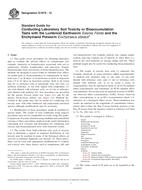
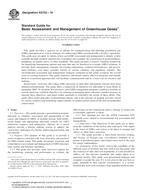 ASTM E2725-10
ASTM E2725-10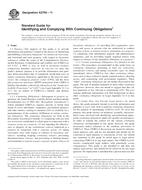 ASTM E2790-11
ASTM E2790-11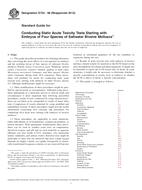 ASTM E724-98(2012)..
ASTM E724-98(2012)..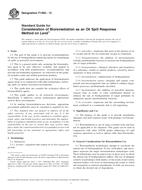 ASTM F1693-13
ASTM F1693-13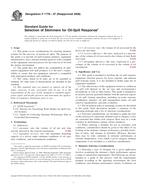 ASTM F1778-97(2008)..
ASTM F1778-97(2008)..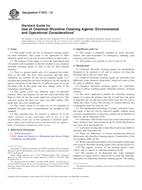 ASTM F1872-12
ASTM F1872-12
 Cookies
Cookies
